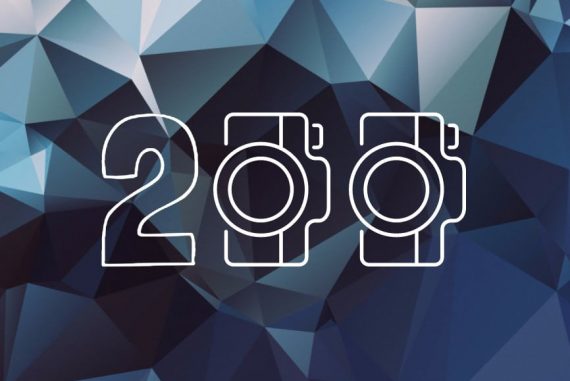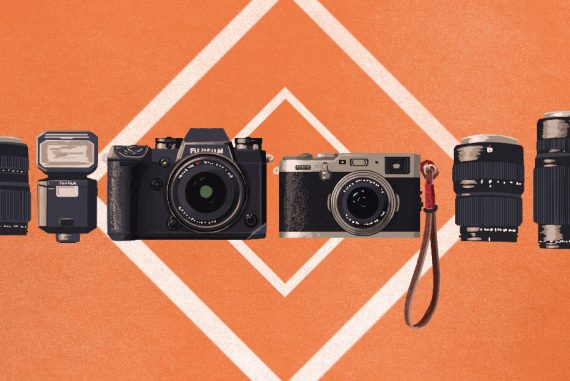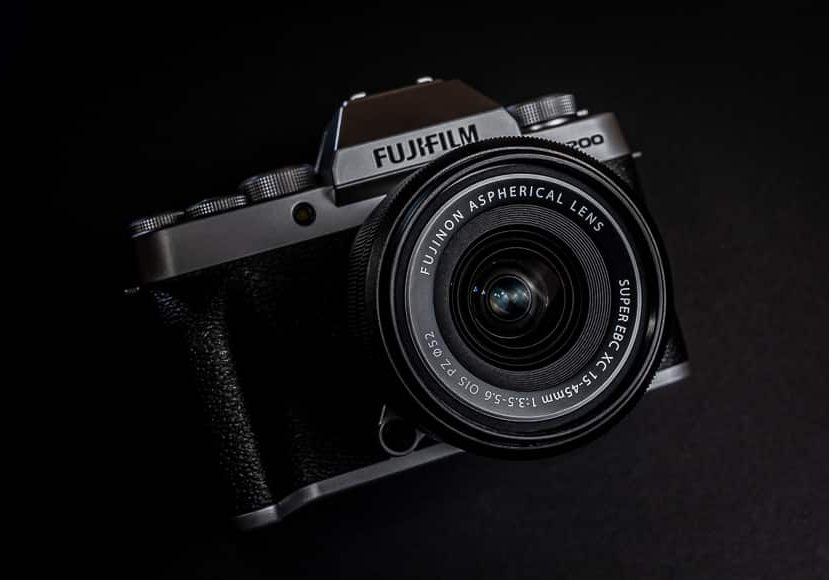
Fujifilm X-T200 Review
Is the Fujifilm X-T200 the best entry-level mirrorless camera on the market? Read our review of this powerful yet affordable camera!
It seems like only a couple of weeks ago that I first reviewed the predecessor to the X-T200 – Fuji’s great little entry-level mirrorless camera.
I really liked it for what it had to offer. However, there was of course room for improvement, even in a budget-model camera.
Time certainly flies when you’re having fun – and stuck at home for months thanks to social distancing!
Now we have a new and noticeably upgraded entry with the sensibly tagged X-T200.
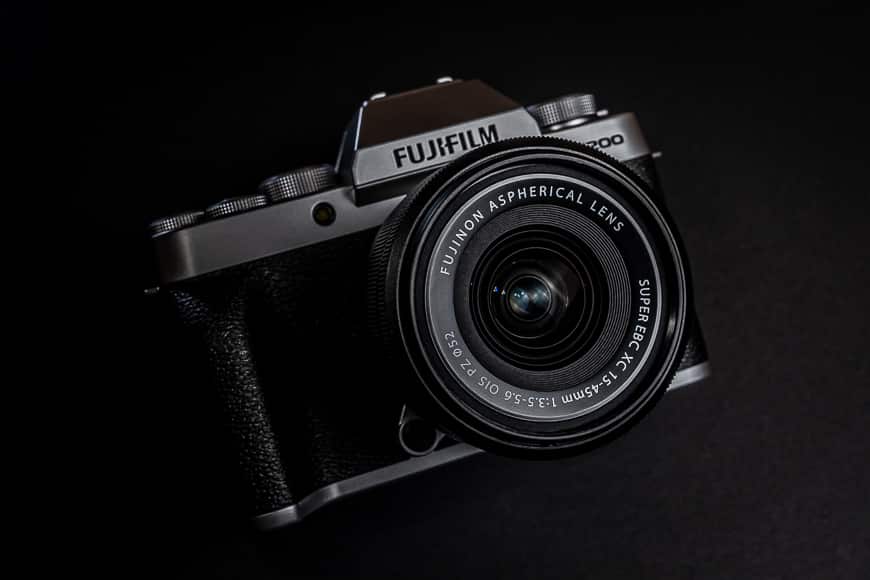
Compact mirrorless camera that packs high-level features into an affordable body.
True to its predecessor and Fujifilm design standards, the X-T200 holds tight to the classic retro look that Fujifilm cameras are known for.
But this little nugget of a camera is much more than just a pretty package. This is a fully functional and feature-packed mirrorless camera that, thanks to its Fujifilm X-Mount, has the capacity to utilise any of the amazing Fuji lenses.
That lens line-up in itself is an incredibly attractive selling point for this camera. It also provides options as users advance in knowledge and skills.
It’s hard to not feel like I’m repeating myself as I write this article – the Deja Vue is strong with this one. At a casual glance, the X-T200 looks, feels and operates just like the previous model.
But there are some subtle and sensible changes that have been made to further appeal to all the smartphone shooters and first-time photographers. It’s taken a considerable step to include some of the features that Fuji included in the X-A7 last year.
Let’s take a closer look at the Fujifilm X-T200 and also some important comparison points with the Fujifilm X-T100.
(Check out more Fuji cameras from the current range here.)
Fujifilm X-T200 Specs
- Compact Fujifilm camera
- Great Fujifilm design and build quality
- Gorgeous retro aesthetic
- Fantastic image quality even in low light
- Perfect for vlogging
- Excellent entry-level mirrorless cameras
- Off-centre screw mount
- THAT kit lens issue!
- New 24.2 megapixel CMOS sensor
- 16:9 ratio 3.5-inch, 2,760K-dot color LCD monitor
- 121.0mm (4.8″) x 83.0mm (3.3″) x 55.1mm (2.7″)
- 370 g (13 oz.) (including battery and memory card)
- 4K 30P, Continuous recording: up to approx. 15 min.
- 3 colours to choose from
- Bluetooth connectivity
- Face and eye detection
- 11 Fujifilm film simulations
Build & Appearance

Just take a moment to appreciate that gorgeous Fujifilm retro design in the X-T200.
As mentioned, and true to the Fuji way, the X-T200 has a classic retro design that’s accentuated by the use of polished metal-looking top and bottom plates. This is in contrast to the use of a fake leather wrapping around the rest of the body (fake but effective!).
It’s almost the same size as the previous model however it’s thicker thanks to a beefier grip – this grip’s an integral part of the body where the older version had a clip-on grip.
It’s a really neat little package of a camera that can easily be thrown into a handbag, travel bag of an everyday carrier (that’s hipster for man-bag!).
Despite the increase in size to its depth, the folk at Fujifilm managed to shave off 78g (2.7 oz.) from the overall mass of the X-T200. That’s a nifty 17% weight loss making me beg the question – what’s its secret?
I instantly noticed the drop in weight as it made the camera feel a little more plastic and cheap than it ought to. It doesn’t quite feel like a toy camera but it is on the precipice.
The external body is made from the same sturdy plastic as its predecessor as well as the X-A7.
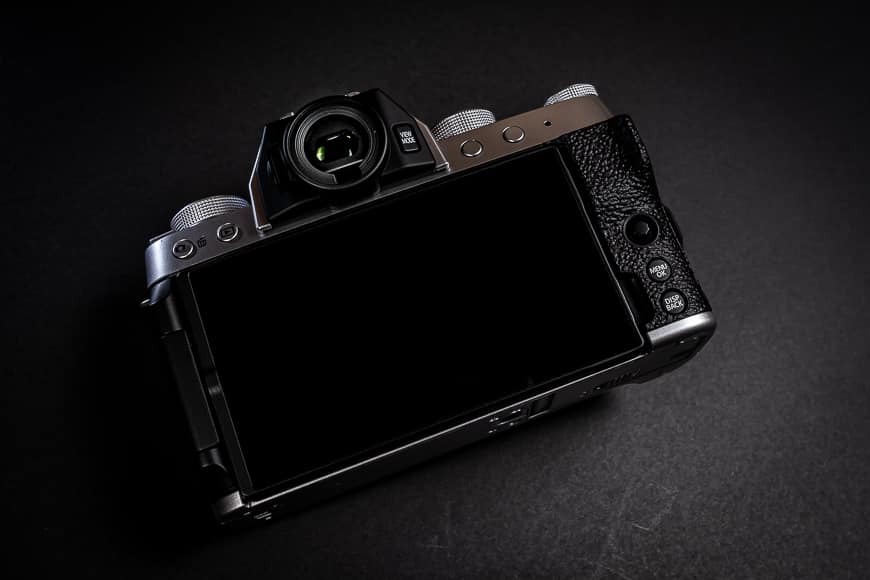
The Fujifilm X-T200 features a larger 3.5 inch, 16:9 ratio touch screen with twice the resolution of the older model.
I love the inclusion of metal features where they are warranted – the strap lugs, underbelly screw mount, hot-shoe, and of course the lens mount are all metallic, solid and strong.
I really appreciate the use of proper camera strap lugs as it allows for any style of the strap to be attached. Though there’s a Fuji strap in the box, you’re not compelled to use it.
Other cameras of this size and weight often only feature the kind of lugs that allow you to pass a thin nylon cord through.
Initially, the top plate looks pretty much the same on this model as it does on the previous one. But there have been some very subtle design and layout changes to the dials and buttons.
For one they feel more robust and solidly connected to the camera – the dials on the X-T100 felt like they were a little loose.
The front right dial that previously was the On/Off switch has been replaced with an actual free-spinning command dial. This also houses the shutter release and is fully customisable.
The small, round Fn button has been removed and replaced with an oblong On/Off button that sits flush against the housing.
Finally, the far-right command dial on the X-T200 is no longer recessed into the camera housing keeping the dials all on an even playing field.
Aside from that, the mode dial, left-hand command dial and pop-up flash are all much the same. I love the use of unmarked command dials that can all be customised to your liking.
The pop-up flash is well constructed to hide away inside the housing and release on solid mechanisms when needed. There is a reassuring click when you open and close this.

The X-T200 features a rotating, tilting flipping screen perfect for vloggers and the vain!
The rear of the Fujifilm X-T100 was already a pretty minimal affair and the X-T200 has taken that and stripped it back even more.
The two biggest changes are the removal of the four-button D-pad and the increase in the screen size – both of which, for me, are welcome changes.
While there are die-hard fans that would kill for the standard D-pad, it does take up a lot of real-estate on the back of such a small camera. By removing it, there’s more room for a larger screen as well as less likelihood of it being accidentally pressed just by holding the camera.
As it stands, there is only a directional toggle, a Menu/OK and Disp/Back buttons. Across the top of the screen, there are playback and trash buttons as well as two blank buttons – this camera is dripping in customisable controls.
The X-T200 has a three-way tilting panel that can be completely flipped out on the horizontal to act as a selfie or vlogging screen. This is another example of how Fuji is appealing to a younger market.
The panel sits flush against the housing of the camera and can be shut with the screen facing out or in.
The rear of the panel has the same fake-leather texture, which really adds to the retro / film-camera look of the X-T200.
Noticeably the rear command dial that sat just in front of the thumb has been removed in this model, further cleaning up the aesthetic.
Finally, the viewfinder on the X-T200 is exactly the same as that found on the X-T100 – 0.39″ with approximately a 2,360K-dot OLED panel.
It’s nice and bright and clear however the magnification is not great. Despite this, it has a diopter adjustment dial and a view-mode button for changing the settings of when the viewfinder activates.
Overall, the Fujifilm X-T200 continues the gorgeous Fujifilm design styling with retro-inspired flare. Personally, I think it looks great!
Ergonomics & Handling
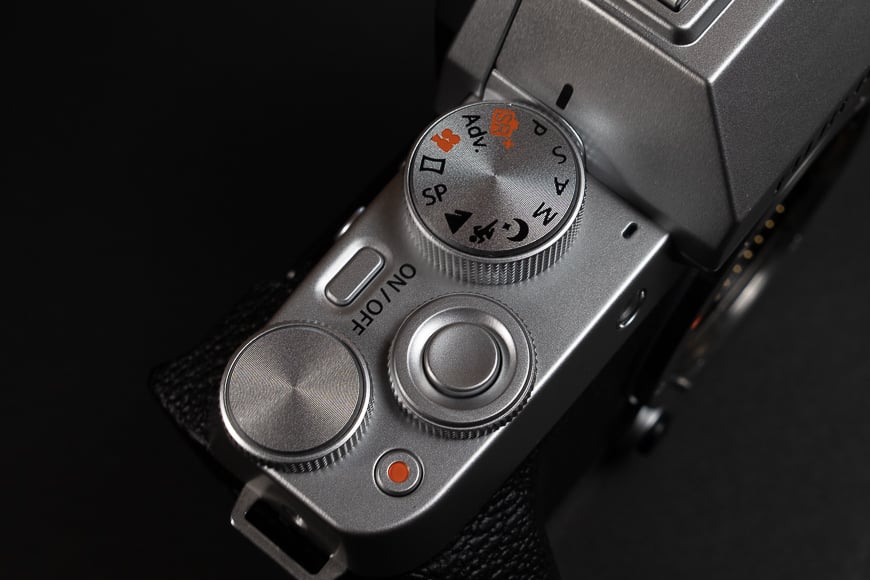
Gorgeous, minimal design is what the X-T200 is all about – plus it takes great photos.
Without a doubt, the biggest and arguably best design change to the X-T200 is the new grip.
The previous model had a separate screw-on grip that was not overly solid or big enough. This new grip allows for three fingers to hold to the front of the camera – two larger ones comfortably.
Further to this, the fake-leather texture on most of the surfaces of the camera has a slight rubber feel to it making is more grippy (is that even a word)?
With the slightly raised thumb rest and the removal of the D-Pad, you can comfortably hold this camera with no chance of accidentally hitting a button.
There is nothing worse than aligning your shot only to find out that you accidentally shifted your white balance
And at only 370gm – 78gm lighter than the X-T100 – it’s a wonder that the camera doesn’t fly away in a strong wind. Needless to say, the X-T200 won’t cause any level of fatigue from a full day of shooting.
I also like that when you have the rear panel closed with the screen facing in, you have even more room for your thumb to sit.
The Fuji X-T200 houses the same battery as almost all of the Fujifilm X cameras (with the exception of the new Fujifilm X-T4 which now sports a larger battery). This is accessible via a hinged panel on the base of the camera along with the SD card.
I did find that when the battery and card are in this compartment together, it can be fiddly to get the card in and out.
A confusing design choice that I see in many cameras is the way in which the tripod screw mount is off centre.
In my book, it should be aligned with the centre of the lens mount so that when it’s mounted on a tripod, the camera and lens are naturally aligned with your view.
Also, the battery access panel is right next to the screw mount meaning you cannot change batteries when mounted to a tripod.
These are minor niggles that probably wouldn’t catch the attention of the intended audience for this camera.
All of the buttons and control dials are spread out well and, as a result, there is no accidental bumping of one button while trying to hit another.
The control dials have a nice clicking response when turned and the mode dial is rock solid when on a setting – you won’t accidentally change this dial to Sport Mode in a hurry.

The panel on the X-T200 that houses the touch screen can be flipped for protection or convenience.
As mentioned, the X-T200 now features a 3.5-inch, 16:9 ratio screen that’s got more viewing real estate than the previous model.
This ratio, along with touch capabilities, lends itself more to a smartphone experience.
Plus, the screen resolution has jumped from 1,040K-dot to a whopping 2,760K-dot monitor – that is a huge jump and is easily noticeable when in use.
As seen with the Fujifilm X-A7, this new wider screen is absolutely perfect for shooting a video in that ratio – plus the 180-degree tilt screen lets you see yourself in magnificent resolution!
The interface on the touch screen is also identical to the X-A7 in that it has the option for a standard Fuji menu or an icon-based option on the screen.
The Fujifilm menu system as found on the X-T200 is a joy to use – unlike with some other brands – and has a natural flow of options, functions and information.
The icon-based system allows you to access customised features via a simple touch. By default, you can access the Q menu, touch screen focus, White Balance, Film Simulations and Focus Mode.
Two of the icons are customisable, and through the main menu, you can alter the features you have for quick access via the touch screen.
There is also an icon to return to the standard screen and even a Question Mark icon to get a description of each icon. This is all very user friendly and obviously is designed to make smartphone shooters feel right at home.
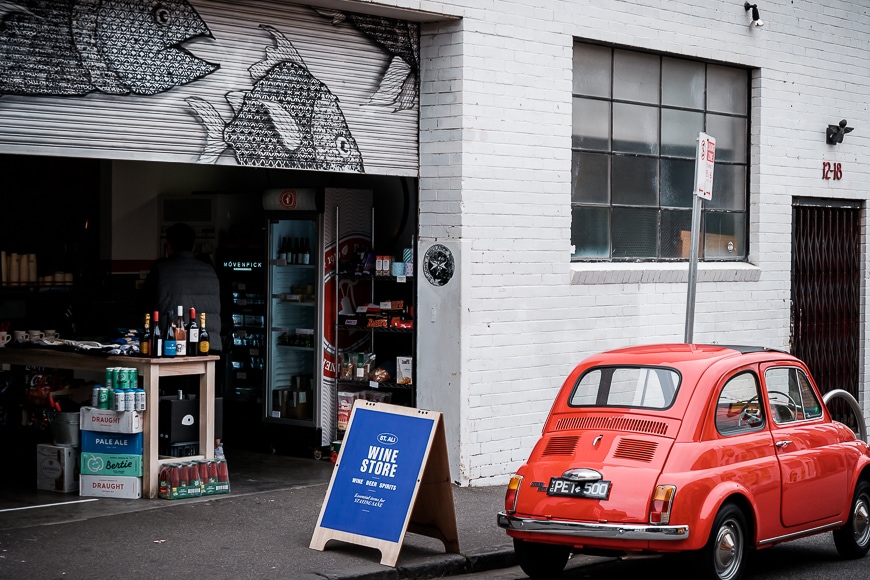
Fujifilm X-T200 + XC 15-45mm f/3.5-5.6 | 45mm 1/250 f/8 ISO1000 – This image was shot on the Fujifilm X-T200 using the Classic Chrome film simulation.
There is another feature that I think is great – the Film Simulation icon.
Fuji is renowned for its amazing film simulations. With the Film Simulation on-screen touch icon, you can choose a certain film simulation and drag your finger across the screen to see a before and after representation of how your image will look.
These touch screen features are clearly aimed at first-time digital camera shooters migrating from a smartphone.
Also, there has been a noticeable improvement in the responsiveness of the touch screen on the X-T200.
The previous model’s touch screen was a little laggy and somewhat frustrating at times. It’s great to see that this one performs as you would hope – fast and accurate.
A common frustration for me with all of my Fujifilm cameras – I own three now – is that I often accidentally move my focus point on the touch screen.
While you have the ability to use the touch screen with swipes in place of the D-Pad, I would often accidentally activate a feature. As a result, I tend to turn off the touch screen function on my Fujifilm cameras – all that amazing technology has gone to waste.
The viewfinder eye-cup is made from a rigid plastic that I would often clank against my glasses when shooting. I miss the days of soft rubber eyecups. I do like that you can easily adjust the diopter.
I also love that I can shut the rear panel with the LCD screen facing in and just rely on the viewfinder for shooting. I am not a huge fan of chimping.
Note: Chimping is a ridiculous term used to describe the photography habit of reviewing every single photo you take on the rear screen – it’s the worst form of arrogance! ;)
The Fujifilm X-T200 is small, comfortable to use and a well-designed piece of kit. Once again I was surprised that I could comfortably use such a small camera without early-onset arthritis kicking in.
Focus Performance

Fujifilm X-T200 + XC 15-45mm f/3.5-5.6 | 45mm 1/2000 f/5.6 ISO1600 – Given the sheer amount of lycra, this cyclist was obviously going super fast – but the X-T200 had no issue gaining focus.
As with all Fuji cameras of this calibre, the X-T200 has a comprehensive selection of focus settings – from multiple tracking modes to the use of Face and EYE AF modes. You’ll be sure to grab even the most stubborn of moving subjects.
I found that the autofocus system is incredibly responsive and sticky thanks to the full phase detect system and 425 autofocus points.
The autofocus on the X-T200 is another vast improvement on the previous model – which, if you recall, was one of the biggest issues I had with that camera.
Even entry-level cameras have tough competition these days. Especially as camera brands work diligently to pack last-generation tech from their high-end cameras into this generation of their entry-level models.
Where the autofocus was slow and hunted a lot in the previous model, this camera is fast and accurate – it’s obvious that Fujifilm read my review and took it to heart.
I just wish they would listen to my advice on the Fujifilm XC 15-45mm lens that comes with these cameras. It’s a big part of the autofocus problem that many people experience.
My advice, when you pick up the Fujifilm X-T200: do yourself a favour and grab the XF 18-55mm kit lens. It’s a brilliant lens and one of the most celebrated kit lenses on the market. Give the XC 15-45mm to your kids to play with.
What’s more, the touch screen is far more responsive when using it to select focus points and to shoot. There’s nowhere near the amount of lag experienced with the previous model.
Low Light Performance

Fujifilm X-T200 + XC 15-45mm f/3.5-5.6 | 15mm 1/2000 f/9 ISO1600 – On a dark and dreary Melbourne day, the X-T200 had no trouble with the poor light.
As experienced with the Fujifilm X-A7, shooting in low light with the X-T200 was seamless and productive – not a lot of entry-level cameras can boast that!
I was pleased to be able to test out the camera with both poor lighting and high ISO without creating images that were worthy of the bin.
The ISO range is from 200 up to 12,800 with an extended sensitivity range of up to 51,200. What’s more, this is a significant improvement over the X-T100 which was no slouch in the low-light performance.
Again, your lens is going to make a huge difference especially when it comes to wide apertures. Regardless, the resulting images did not have excessive noise or artefacts common in low-light shooting.
Overall, this is a camera that will comfortably and successfully shoot in any conditions.
Image Quality

Fujifilm X-T200 + XC 15-45mm f/3.5-5.6 | 45mm 1/200 f/8 ISO250 – Melbourne’s grumpy weather was no issue for the X-T200.
Keep in mind that we are currently in a state of isolation due to the Covid-19 issue.
As a result, I was somewhat limited in being able to get out and freely shoot – the police were actually charging people for needless outings. Regardless, I snuck out and got a few images while avoiding the fuzz like a ninja!
In my opinion – and that is what this review is – image quality is always the product of two components. Put simply, image quality should only be assessed based on the camera and the lens used.
In the case of the Fujifilm X-T200, it didn’t matter what lens I put on the camera, it just delivered great images – even with the crappy kit lens that I will just not shut up about!
Shooting in RAW allows for brilliantly sharp images with a suitable amount of detail to be worked in in post-production.
A fan favourite of shooting with a Fuji camera is the gorgeous JPEG files they produce. The X-T200 is no exception to this with no less than 11 film simulations to apply either prior to shooting or afterwards via in-camera processing.

Fujifilm X-T200 + XC 15-45mm f/3.5-5.6 | 45mm 1/250 f/8 ISO1000 – The X-T200 has fantastic colour reproduction.
The JPEGs are beautifully rendered with perfect skin tones and perfect colour matching. After all, Fujifilm has been playing this game for a very long time.
As mentioned, you can preview the film simulations in live mode via the large touch screen.
In fact, the far left command dial has a default setting of adjusting the film simulations – Fujifilm obviously wants you to play with their sims.
Image quality is something that Fujifilm take very seriously when developing their cameras. This camera is definitely no exception to that rule.
The sensor in the Fujifilm X-T200 is doing a sterling job even when it comes to clear and sharp continuous shooting at up to 8fps.
Overall Performance
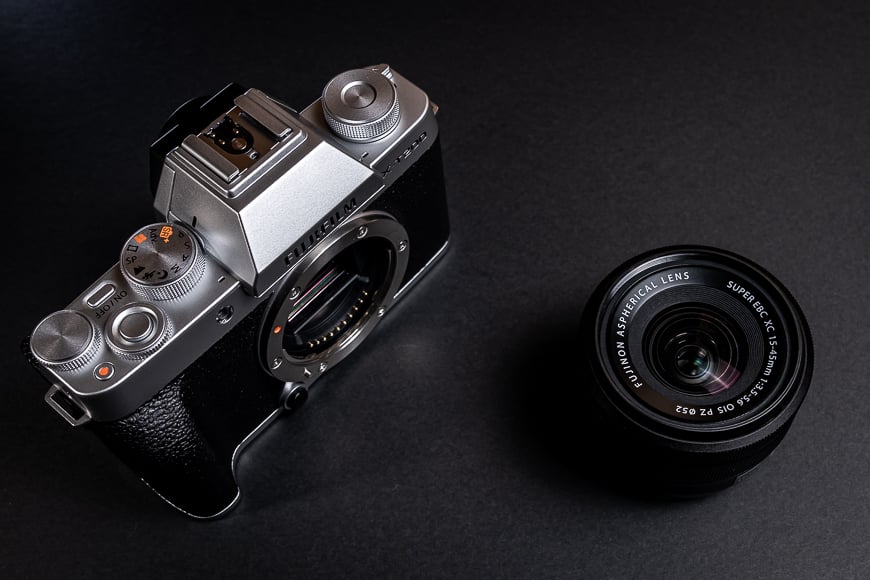
The Fujifilm X-T200, NOT the lens, is brilliant and amazing value for money.
Thanks to a number of significant improvements over the previous model, the Fujifilm X-T200 is a solid performer. And while it’s clearly marketed at those new to photography, or those stepping up from smartphone shooting, it’s an incredibly reliable shooter.
Thanks to the new and improved 24.2MP sensor, faster autofocus system and a range of user-friendly customisations, it’s one of the best entry-level cameras on the market.
I primarily shoot with a Fujifilm X-T3, plus an X-E3 and my beloved X-70. The X-T200 is incredibly comfortable and familiar to me but would be just as easy for a newbie to pick up and master.
But the subject heading is ‘Overall Performance’ so I have to come clean – the Fujifilm X-T200 has a dirty little secret that cannot be avoided.
The camera comes bundled with the Fujifilm XC 15-45mm f/3.5-5.6 power zoom lens – this is the only kit option as seen with the X-T100 and the X-A7.
I have to say that I am disappointed that Fujifilm has not done away with this lens. That may sound a little harsh but let me explain.
I realise that this is an entry-level and budget model camera from Fujifilm. As such, they needed to keep the cost to consumer down to make the product attractive.
But the XC lens that comes with it is a shocker by today’s standards – it was just OK a year ago, it’s crap now!
The lens is incredibly slow to autofocus and hunts for focus in lower light – plus the power zoom is also slow to respond.
The XC 15-45mm produces soft images and overall it’s not helping sell the benefits and features of the X-T200. It’s quite literally holding it back.
Some have complained that the slow focus performance is the fault of the camera. But if you remove this XC lens and drop any of the XF lenses on, you get instantly better performance.
I cannot stress enough that this is a great camera that is let down only by its kit lens. I just wish Fuji offered it as a body-only purchase at a cheaper price or with a better lens at a slightly higher price.
Video Performance
While the X-T100 was able to shoot at full 4K, it was only at 15fps which is pretty much next to useless for usable footage by today’s standards.
I am pleased to see that Fuji has also given the video performance a boost in the X-T200 with 4K at a respectable 30fps – making it perfect for those wanna-be YouTube millionaires just waiting for their big break.
The HD recording has not been left out with a sizeable increase from 1280 x 720 to Full HD @1920 x 1080 at 59.94p / 50p / 24p / 23.98p – all with a continuous recording time of up to 30 mins.
These are a great set of specs from an entry-level camera like the Fujifilm X-T200. Still, thanks to the ability to use any Fuji X Mount lens, a hot-shoe for an external mic and a fully articulating screen, you can really make the most of your video output with a camera like this.
Kudos to Fuji for also including a 3.5mm Mic port as well as an adapter (included in the box) that converts the USB-C port into a headphone jack – brilliant!
Value for Money
The Fujifilm X-T200 is an amazing little entry-level camera that is exceptional value for money.
At around $700 you get a complete package well suited to those just starting out. Being able to create amazing images or high-quality video has never been more cost-effective with a Fujifilm camera.
As mentioned here, and as mentioned in my X-T100 review, do yourself a favour and quickly pick up a decent Fuji lens such as the XF 18-55mm. Extend your budget just a little and you’ll open up a greater level of performance from the X-T200 and greater level of creativity within yourself.
Use the included kit lens as a doorstop or something!
Speaking of other lenses, you have endless possibilities to further expand your lens collection with both pro-level and enthusiast-level lenses from Fujifilm – and they are all amazing.
Fujifilm X-T200 Review | Conclusion
All too often, entry-level cameras come with a long wish list of improvements. Just take a look at any reviews – photographers are needy folk that are never satisfied.
However, with the Fujifilm X-T200, you get a near-perfect camera body fit for someone new to using a digital camera. What’s more, you get it at an incredible price.
For vloggers and other creatives, you have the capacity to expand your kit with tripods, external microphones, flash systems and more. And of course, you have access to some of the most impressive lenses on the market.
Fuji has really spoiled us for choice. Regardless of your budget, experience or needs, there is a Fujifilm camera suited to you.
The X-T200 ticks a lot of boxes when it comes to meeting those ‘never-satisfied’ photographers.
Even experienced photographers could grab one of these and throw it in their everyday carry bag or take it on their travels. And if you’re already an existing Fuji shooter, you probably already have a few lenses kicking about that you could drop onto the X-T200.
As you can see, this is a very versatile camera and I take my hat off to Fuji for taking a good camera in the X-T100 and making it fantastic with this newer model.

Compact mirrorless camera that packs high-level features into an affordable body.









